Fujifilm XF 18mm f1.4 review
-
-
Written by Gordon Laing
Intro
The Fujifilm XF 18mm f1.4 is a wide-angle prime lens for the X-series mirrorless system. Announced in April 2021 and costing $999 or 879 pounds, the XF 18mm delivers standard wide angle coverage equivalent to 27mm when mounted on an X-series body.
It’s a higher-end alternative to the existing 18mm f2 pancake lens, with an extra stop of aperture and weather-sealing, albeit larger and roughly 50% more expensive. Meanwhile the new 18 1.4 costs around the same as the earlier 16mm f1.4 which is equivalent to 24mm if you prefer something wider. Fujifilm sent me a pre-production sample for my first-looks review video below, where I’ll show you everything you need to know about the lens. Since then I have tested a final production copy of the lens for my updated sample images gallery. If you prefer a written version, keep scrolling!
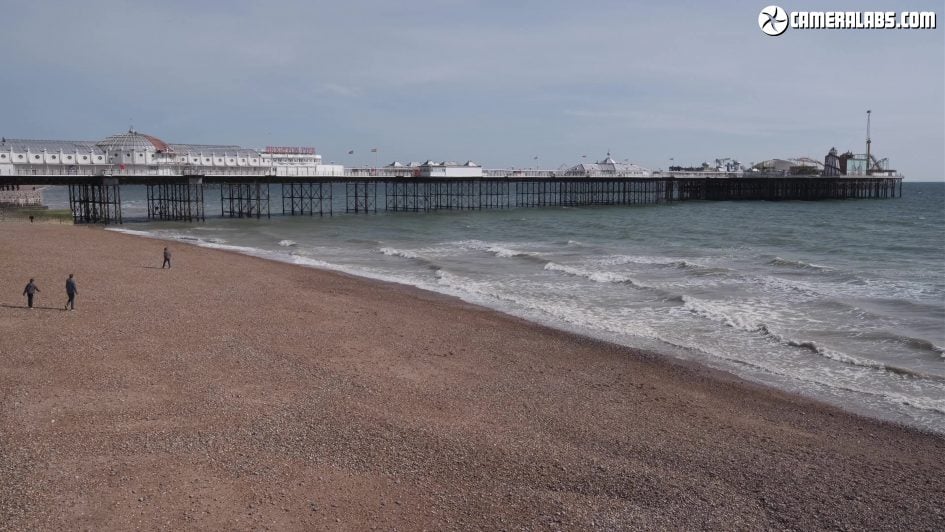
Above: The 28mm focal length – or thereabouts – falls roughly between the mild 35s and wider 24s, capturing a respectable field of view while avoiding dramas with distortion or perspective. They’re the safe wide angle choice, ideal for a wide variety of subjects and today in a market flooded by new 24s and 35s, feel almost exotic. Ironic since back in the day they were the typically the second lens everyone bought after a standard 50.
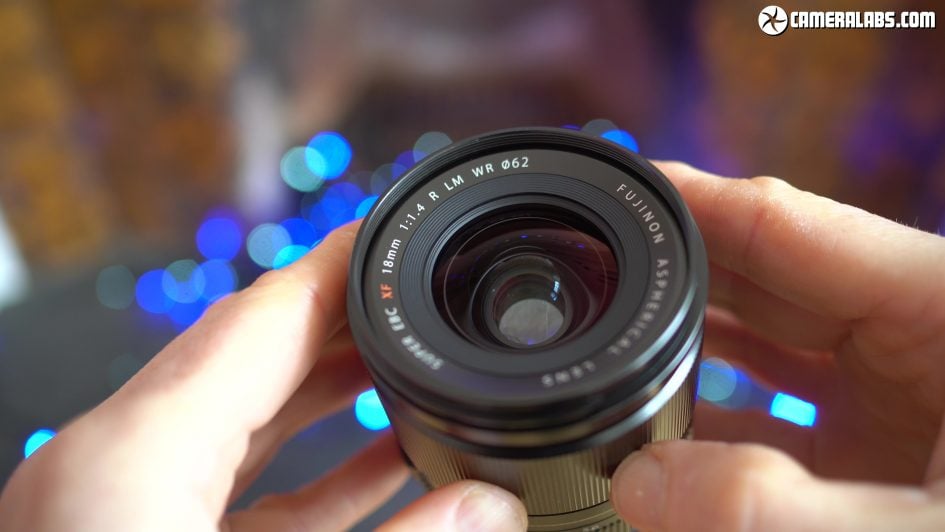
Above: At 69x76mm and weighing 370g, the XF 18mm f1.4 is similar in size and almost identical in weight to the earlier 16 1.4. The only key difference in dimensions is a slightly narrower barrel, in turn allowing smaller 62mm filters versus 67 on the wider lens. For the record, the older 18mm f2 is a little narrower still, allowing 52mm filters, but most obviously it’s less than half the length and one third the weight, so if ultimate portability is important, order the pancake.
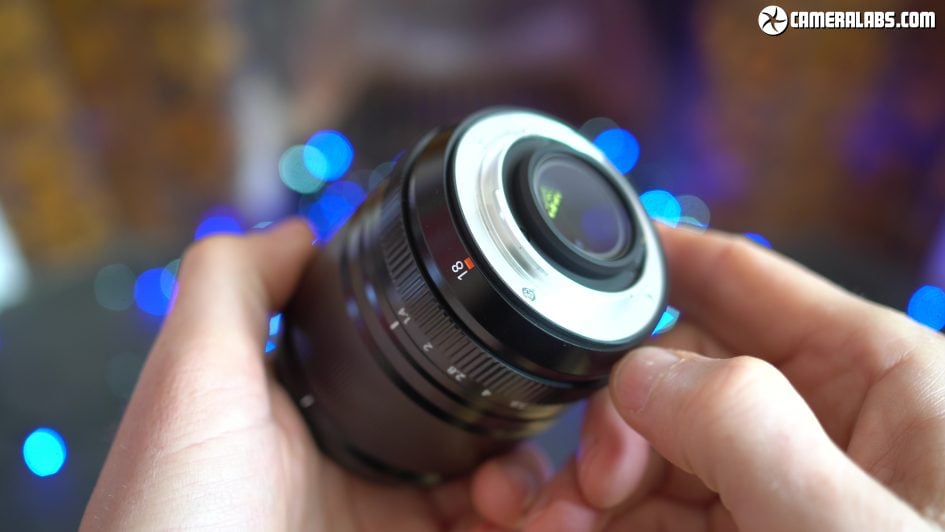
Above: As a WR lens, the 18 1.4 is dust and moisture resistant, a benefit both it and the 16 1.4 share over the older 18 f2 which is not sealed.
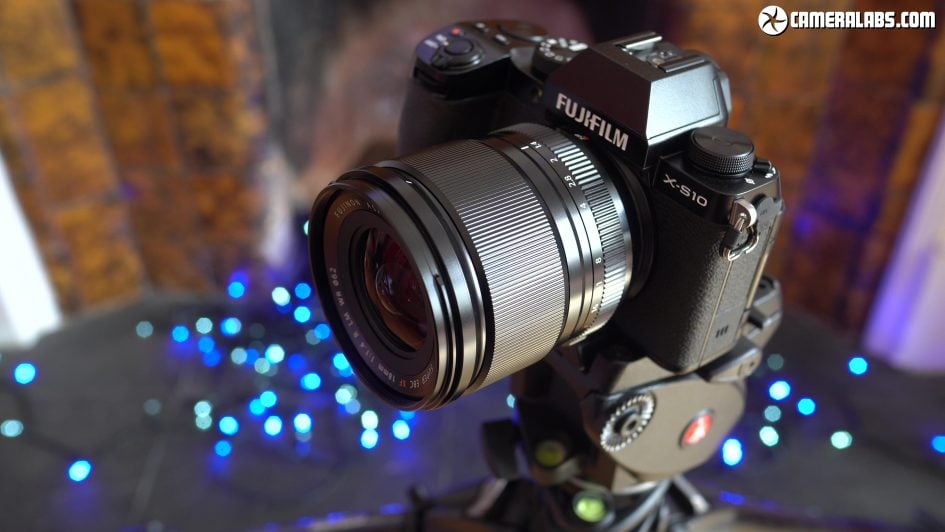
Above: In terms of controls, the 18 1.4 is equipped with an aperture ring running between 1.4 and 16 in one third EV increments with a satisfying click between them. There’s a lock button to hold it in the A position for aperture control via the body if preferred, but no de-clickable option. That said, recent Fujifilm bodies allow silent adjustment of the aperture in movie mode via the touch screen, again in one third increments. There’s a substantial manual focusing ring which turns smoothly and operates with motor assistance, although…
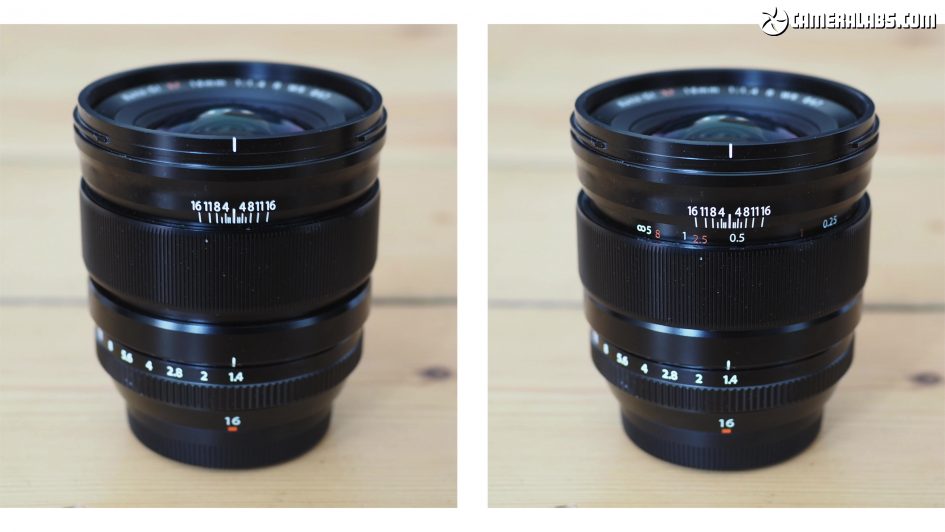
Above: …the lens strangely lacks the pull-back clutch mechanism of the 16 1.4 (seen above) and 23 1.4 that also reveals depth-of-field markings.
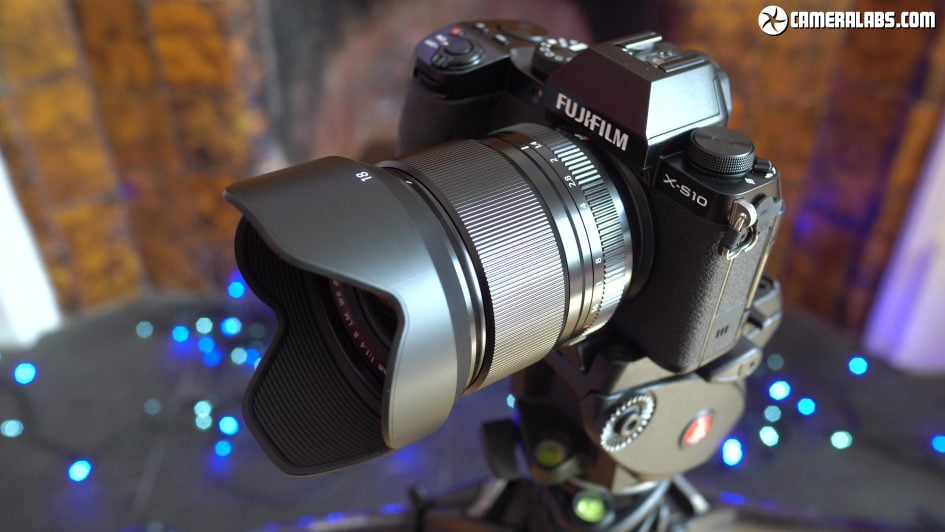
Above: Fujifilm supplies the 18 1.4 with a plastic petal lens hood that twists on with a bayonet fitting, and again the filter measures 62mm.
In my focus tests using Single AFS mode at f1.4, it was pretty swift, albeit with the usual minor contrast-based wobble to confirm at each end – remember this is a pre-production lens so may change. The lens employs a linear motor and felt quick in day-to-day use. In the movie mode with Continuous AFC, the camera relies on phase-detect AF alone to more confidently stop at the subject without the contrast-based confirmation and while the refocusing briefly pauses at times, it’s similar to my experiences testing other Fujifilm bodies and lenses.
When using eye detection in the movie mode, the tracking was pretty smooth and accurate, only occasionally losing me or catching-up. Sony and Canon remain the leaders at face and eye detection in movies, but Fujifilm has done a good job and I’d be happy relying on their AF system while presenting a piece-to-camera.
Next focus breathing where I closed the aperture to f16 and manually focused from infinity to the closest distance and back again. Between infinity and around 1m, the 18 1.4 exhibits minimal breathing with only the mildest magnification, but between 1m and the closest distance the breathing accelerates, becoming much more noticeable. This non-linear change can be quite distracting if you focus across the transition, but if you stick to between 1m and infinity, breathing won’t be a major issue. Again though this was a pre-production sample.
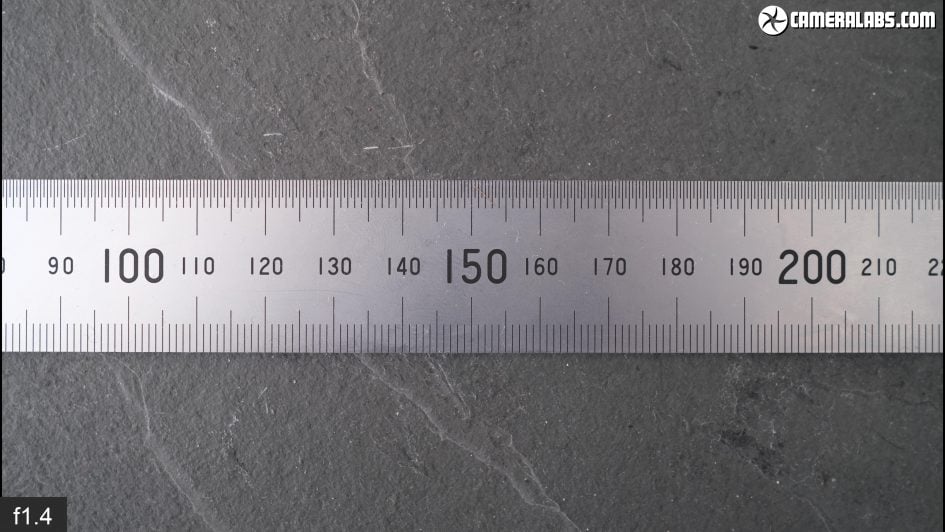
Above: The closest focusing distance is quoted as 20cm, or about 10cm from the front of the lens, allowing you to get really close to subjects. Here’s a ruler from as close as I could focus, reproducing a subject width of 14cm across the frame – and even at f1.4 the details remain pretty sharp to the edges. I have lots of close-up examples later in the review.
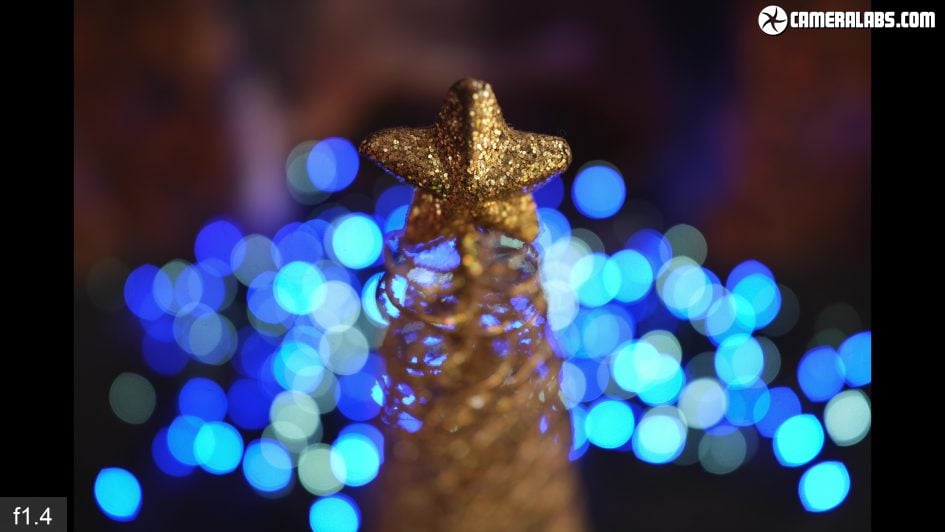
Above: Next for a bokeh test, and you’re looking at the wider part of the aperture range here starting at 1.4, and with the lens focused close to its minimum distance. The lens renders attractive bokeh mostly avoiding the sharp edges and textured blobs of lesser lenses. It’s not the absolute cleanest bokeh I’ve seen, but remains a visible step-up from Fujifilm’s cheaper or smaller lenses.
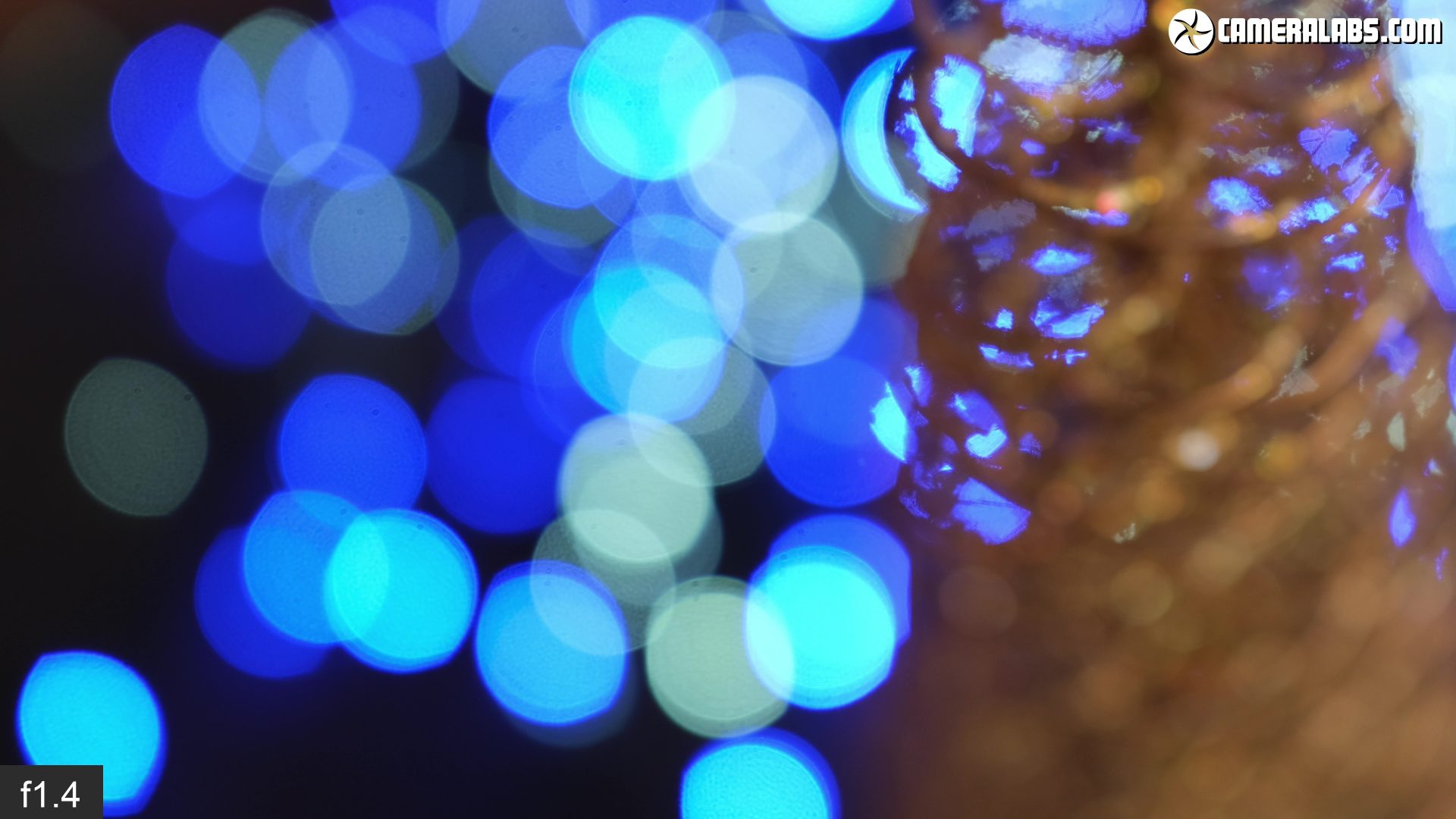
Above: Here’s a closer look at the blobs which, like most large aperture lenses, are cats-eye shaped towards the corners at the largest apertures, but become mostly circular by f2.8. Around f4 and smaller the nine-bladed diaphragm becomes more identifiable, but again at larger apertures the shape is fairly circular.
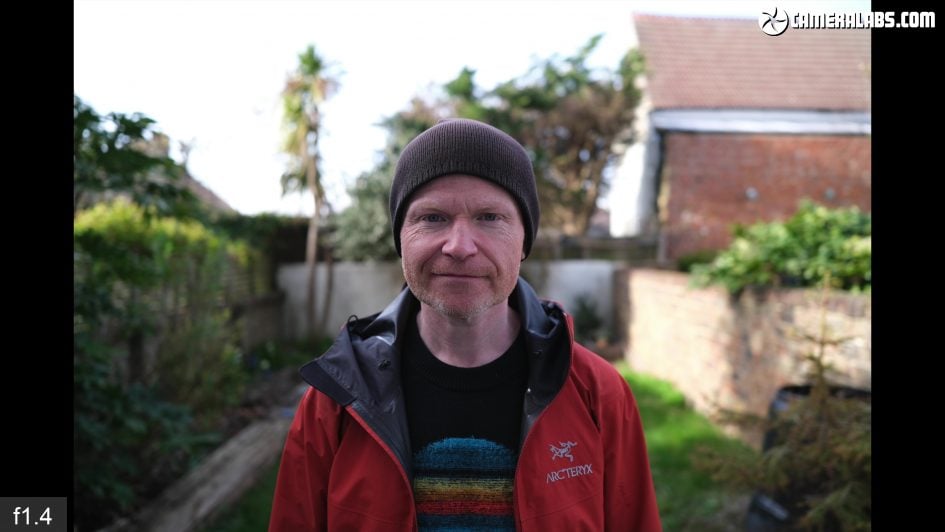
Above: Ok, next for a portrait with the aperture wide open, again with the pre-production 18mm on an X-S10 body. 28mm equivalents may not be your first choice for portrait work, but wides can be fun for environmental compositions where you see more of the surroundings, and if you’re careful with the distance and position on the frame, you can minimise distortion.
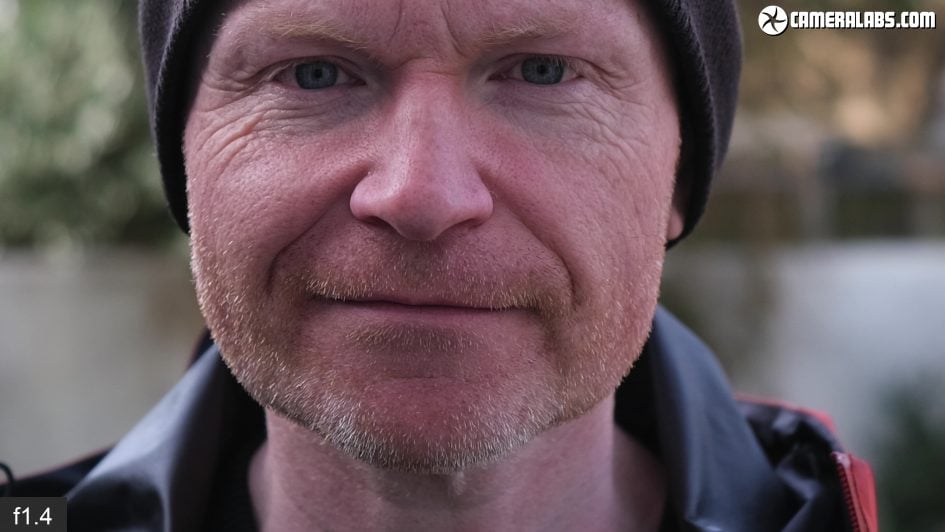
Above: Taking a closer look shows a decent degree of detail around my eyes and beard.
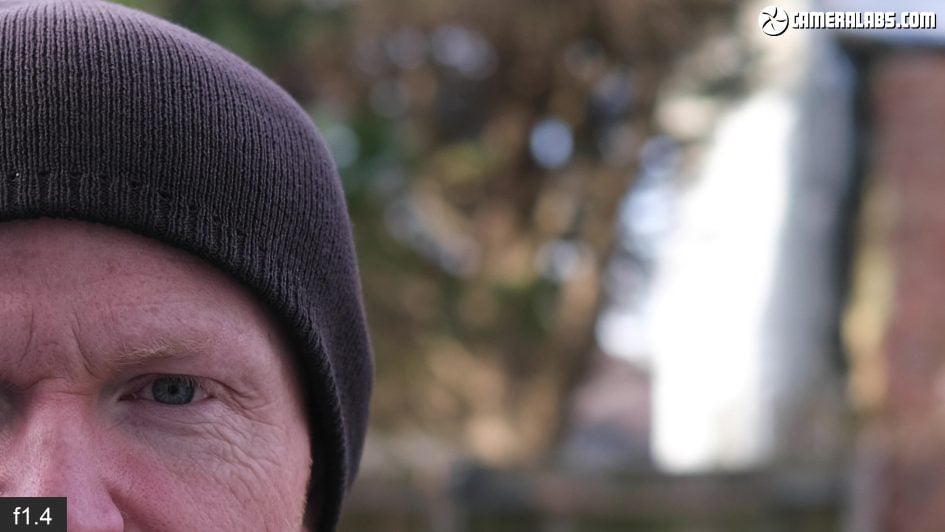
Above: Towards the sides you’ll see the background is rendered smoothly, again avoiding the undesirable outlining or textured patterns of cheaper lenses. It’s certainly a practical option, especially for group shots.
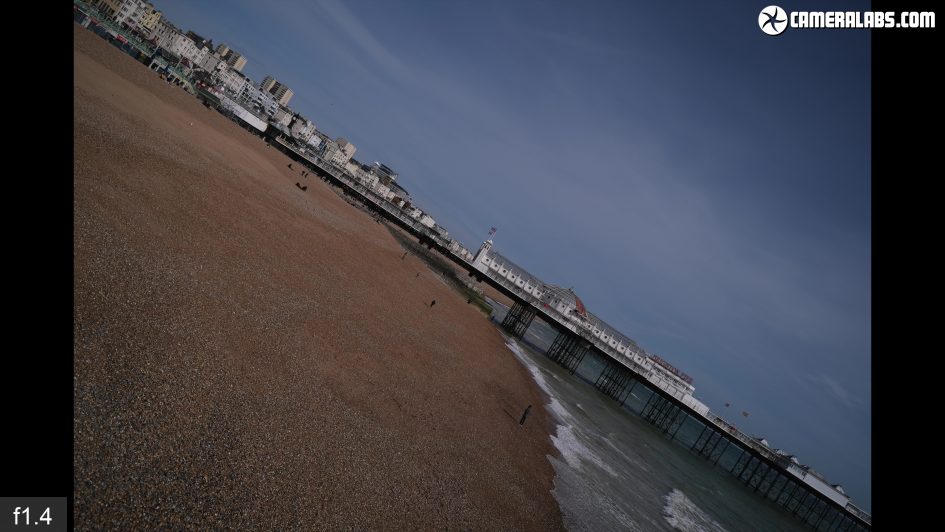
Above: Moving further away, here’s my distant landscape shot, angled as always so that details extend right into the corners where lenses struggle the most. I took this with the pre-production 18mm at f1.4 on an X-S10 body.
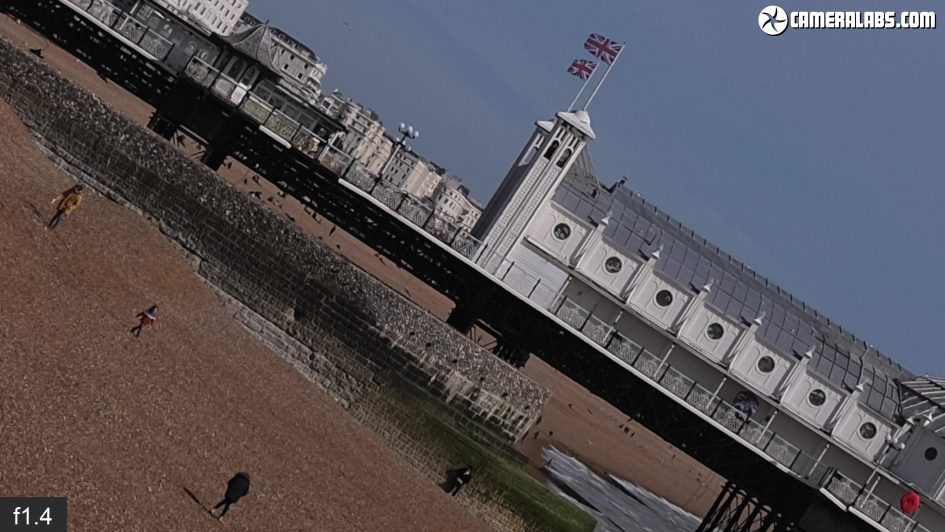
Above: Zooming into the middle for a closer look reveals plenty of fine detail out of the gate and there’s no need to close the aperture to boost it further.
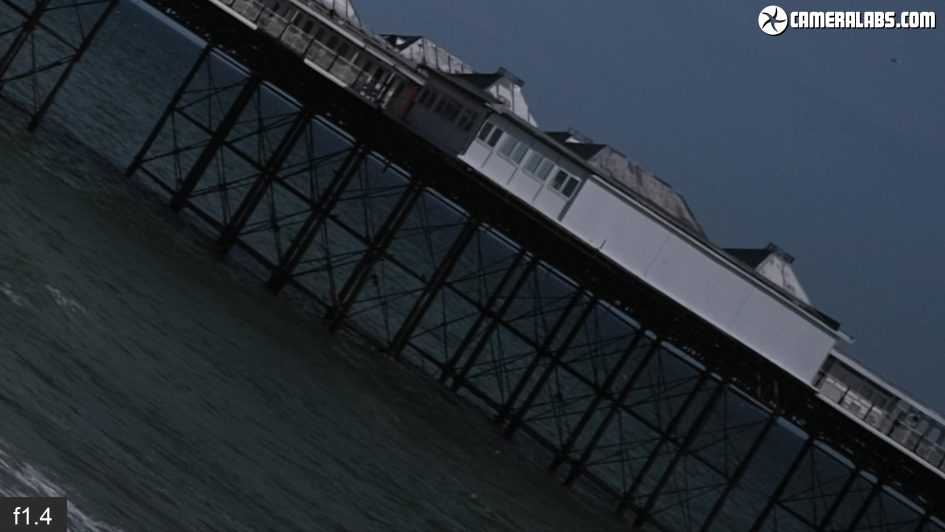
Above: As you move into the far corners, my test sample became a little softer and like most larger aperture lenses also exhibited some darkening due to vignetting. Both gradually improved as the aperture closed and by f4 on my test sample, the picture had become pin sharp in the corners. It’s possible to achieve this with a larger aperture by repositioning the focus area to the corner, but I always perform this test with a central AF area.
Check prices on the Fujifilm XF 18mm f1.4 at B&H, Adorama, WEX, or Calumet.de. Alternatively get yourself a copy of my In Camera book or treat me to a coffee! Thanks!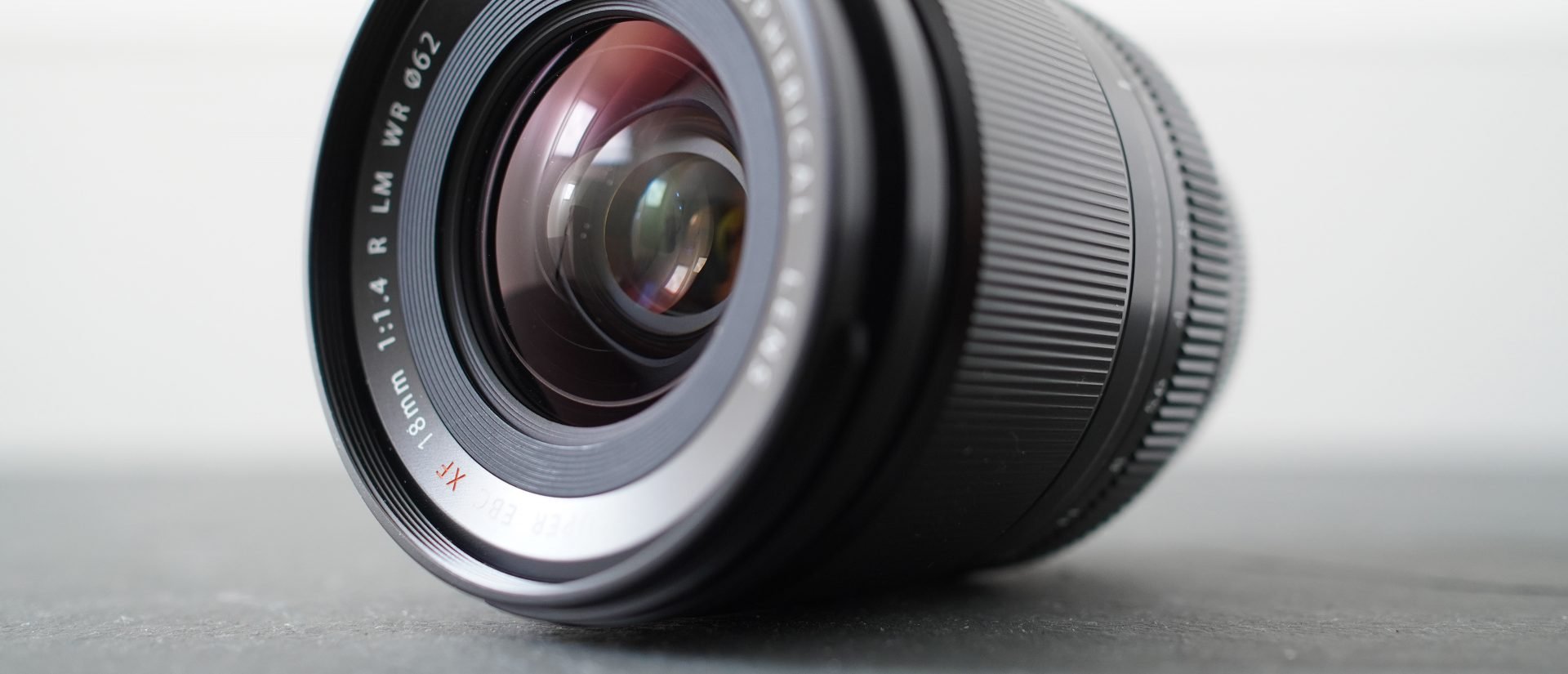
 The Fujifilm XF 18mm f1.4 is a high-performance wide-angle lens for X-series mirrorless cameras, with a flexible 27mm field of view and a bright aperture that allows attractive shallow depth of field effects. In my tests so far, the quality stayed sharp across most of the frame at the maximum aperture for subjects near and far, while the rendering of blurred areas was smooth and undistracting. Shooting at around 28mm with a prime lens also felt surprisingly fresh and reminded me why 28mm was, for a very long time, the second most common lens after a standard 50. As a premium Fujifilm lens, it’s not cheap, but priced similarly to the previous 16 1.4 which provides a wider alternative. If your budget demands something cheaper or you prefer a more compact lens, there’s the 18mm f2 pancake at around two thirds the price.
The Fujifilm XF 18mm f1.4 is a high-performance wide-angle lens for X-series mirrorless cameras, with a flexible 27mm field of view and a bright aperture that allows attractive shallow depth of field effects. In my tests so far, the quality stayed sharp across most of the frame at the maximum aperture for subjects near and far, while the rendering of blurred areas was smooth and undistracting. Shooting at around 28mm with a prime lens also felt surprisingly fresh and reminded me why 28mm was, for a very long time, the second most common lens after a standard 50. As a premium Fujifilm lens, it’s not cheap, but priced similarly to the previous 16 1.4 which provides a wider alternative. If your budget demands something cheaper or you prefer a more compact lens, there’s the 18mm f2 pancake at around two thirds the price.



